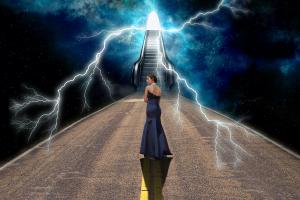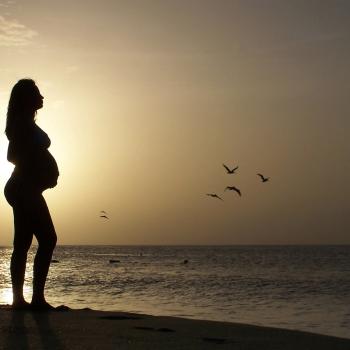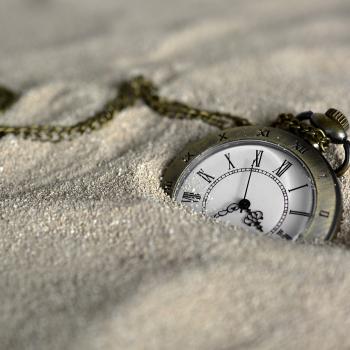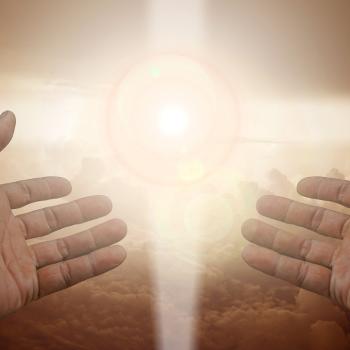 Important people love to mess with time – and I’m not just talking about Einstein and Relativity Theory. Even with a cursory knowledge of Latin or Spanish, you will recognize that ‘Sept’ means 7, that ‘Octo’ means 8, that ‘Nov’ means 9 and that ‘Dec’ means 10. So, why then is September, which is the ninth month in our calendar, called, ‘September’; why isn’t it called, ‘November’? The last four months of our calendar are out of synch by two! Whom shall we blame? It was the Romans who did it. Originally, their calendar had only ten months; and the year, appropriately enough, began in March – which contains the Spring Equinox – and ended, not with November and December but with January and February.
Important people love to mess with time – and I’m not just talking about Einstein and Relativity Theory. Even with a cursory knowledge of Latin or Spanish, you will recognize that ‘Sept’ means 7, that ‘Octo’ means 8, that ‘Nov’ means 9 and that ‘Dec’ means 10. So, why then is September, which is the ninth month in our calendar, called, ‘September’; why isn’t it called, ‘November’? The last four months of our calendar are out of synch by two! Whom shall we blame? It was the Romans who did it. Originally, their calendar had only ten months; and the year, appropriately enough, began in March – which contains the Spring Equinox – and ended, not with November and December but with January and February.
So, September through December were, originally, appropriately named. Then they realized that their calendar of ten months was at variance with astronomy and our solar year. Therefore, they invented two brand-new months and inserted them between June and September. They named the two new months after the emperors Julius Caesar (July) and Augustus Caesar (August.) They tightened up the orbit but sacrificed the language.
A millennium and a half later, another Roman changed the calendar again. Pope Gregory the Great, in October 1582, promulgated the eponymous calendar to really finetune the math, creating leap years in the process. In spite of great opposition from the ‘working class’, he sacrificed ten whole days. People went to bed on the night of October 4th and awoke ‘next day’ on October 15th. And they didn’t even have the excuse of a hangover.
A. The Afterlife
One of these months, November, was dedicated to remembering the veil and those on the other side of it. Attribute this to the Celts and their feast of Samhain (pronounced: “Sow–in” – and that’s ‘sow’ as in ‘now’, not ‘sow’ as in ‘sew’.) the Celtic day began at sunset on the ‘day before’ as did the Hebrew day; and the Celtic year began with Samhain because darkness gives birth to light and to life. For the Celts, day and night, light and dark, summer and winter are lovers not enemies. It’s akin to the Buddhist notion of “form is emptiness and emptiness is form.”
The Catholic church borrowed this notion and grafted their own theology onto it. So, November begins with the feast of All Saints on November 1st, and All Souls on November 2nd. Not to be completely ignored, the Catholic church in Ireland, to honor its Celtic roots, proclaimed November 6th as the Feast of All the Saints of Ireland.
As a Celt and a catholic priest, I do not believe in an afterlife; not because I don’t believe that the soul survives death; I do; but because there is no after, there is only one life – one single life which is the energy that emanates from Source. This one energy manifests as life in all dimensions, including the physical. The same one life force takes a multitude of forms in flora and fauna. Humans are one form of fauna. And each human experiences this one life in several phases. Firstly, comes the pre-incarnational phase of the soul which is a holographic fractal of God. Next comes the incarnational phase where we realize we are ‘spirits in spacesuits.’ Then comes the post-incarnational phase following upon what some call ‘death.’ Buddhism refers to this phase as ‘the bardo state.’ Then comes the re-incarnational phase. And this game of God repeats until all souls remember, even while incarnated, that they are, at core, bite-sized bits of Source.
Religion, of course, has attempted to predict, own and control this process. The Catholic church has a divided the ‘afterlife’ into four condos – heaven, hell, purgatory and limbo. Let’s take them in reverse order. Limbo came from the casuistry of balancing two theological principles (i) you can’t get to heaven unless you’re a baptized Catholic and (ii) ‘Catholic’ babies who die before they can be baptized can’t get to heaven – ever; but since they haven’t actually committed any personal sin, they don’t merit hell. So, God created a kind of a boarding school where angels attended to the needs of the infants – presumably bottle-feeding them and changing their diapers – being very careful to never mention the words, ‘God’ or ‘heaven’ lest it lead to some awkward questions.
In the Ireland of my childhood, these babies were buried in special graveyards called, ‘Cillíní,’ since you couldn’t have them rubbing shoulders with corpses whose erstwhile occupants were now in heaven or hell. Some years ago, without any fanfare, the church silently closed limbo and bussed all of its residents to heaven.
Then, there was purgatory – in my opinion, reincarnation by another name – a place in which souls could be purified of bad karma until they were fit for heaven. Even though it consisted of awful suffering, it had a shelf life and a guarantee of heaven eventually. As of this writing, it’s still extant and doing a roaring trade.
Hell, of course, had the biggest population and consisted only of permanent, fulltime residents who, in God’s infinite compassion, were handed over to a cosmic psychopath called, Satan, and his merry band of sadists. We weren’t told who exactly provided the pitchforks.
Ontologically speaking, there is no such place, though we have managed, during incarnation, to produce passable facsimiles of it psychologically and sociologically. It is no more possible for souls to be eternally separated from God than it is for sunbeams to be separated from the sun.
And then, phew! There’s heaven for the very small band of the obedient elect. The problem is that different religions have radically different ‘rules of admission’ involving different beliefs and different ‘spiritual practices’ if you want to make the cut. Lest you think that you can cover all of your bases – ‘just to be sure to be sure’ – and not piss off any of the God-versions, many of the requirements are either orthogonal across religions or even diametrically opposed. Sorry dude, you gotta bet on only one horse.
You can have 72 virgins if you choose the martyr route of Islam and it proves to be the one true religion; or you get a halo and a harp if you chose Christianity and it proves to be the ‘one and only.’ But, let’s face it, statistically speaking, what are the odds of getting it right, especially among the faith systems that deny reincarnation? You’ve a better chance to winning the Lotto.
When I lived in Kenya and wanted to speak of heaven, I would pun in Swahili and say, “Mbinguni si mahali, bali ni hali.” (heaven is not a place, it’s a state of being.) And that is my thinking. The ‘afterlife’ begins where incarnation ends; we, initially, carry over the mindset we lived by; experiencing the heaven we expected or felt we deserved. But just as it did while incarnated, the soul continues to evolve ‘on the other side’ eventually transcending all of the perks and relationships until all vestiges of the separate self dissolve into the ocean of Unity Consciousness which is Love or God.
B. Indulgences
As a child, on November 2nd each year, I was one of a throng of compassionate Catholics on the frontlines of springing souls from purgatory. On that day, and on that day only, you could release as many souls as you were able by doing the following exercise. For each visit to a church, say one Pater Noster, one Ave Maria and one Glory-be-to-the-father for the pope’s intentions. You had to leave the church and re-enter after each purgatorial pardon in order for it to count, so on November 2nd you’d see breathless kids running in and out of church and praying at the rate of knots. Obviously, the guys in charge at the other side spoke all languages and understand all accents – even English with an Irish brogue.
After each sortie, the gate-keepers in heaven and in purgatory signaled each other: “one soul, Social Security Number 123-45-6789, leaving here (purgatory); over and out” and Peter, at the pearly gates, would reply, “roger that; admitting one soul, Social Security Number 123-45-6789, granted permission to enter.”
As I write these lines, it reminds me of two guys on a road repair project with two-sided signs that read, STOP/GO. If it’s a big distance between them, they use walkie-talkies, otherwise they just eye-ball each other. Maybe the guy in purgatory just used smoke signals and Peter replied with trumpet blasts.
When I finished high school and entered the seminary on September 14th, 1964, I came up with a brainwave. I would start a Team Purgatory project, coopting my class mates, the priests-to-be, in order to empty out purgatory. The problem was that about 200,000 people die each day – 73 million each year. How, in God’s name could I rescue all of these! It would be like trying to mop up the kitchen floor while the sink was overflowing, the plug in place and the faucet fully open. But then I started to do the math. The world population then was 3.26 billion people and the Catholic population was half a billion. Incidentally, over the last two centuries the Catholic population has remained steady at about 16% of the world’s population. However, unfortunately, only baptized Catholics could escape hell, so that reduced my task enormously. Moreover, those in limbo could not be redeemed using indulgences; and, again very unfortunately, as I listened to the fire-and-brimstone preachers of the day, I understood that very few Catholics actually made it into purgatory, let alone heaven. Many fell at the twin hurdles of eating meat on Fridays or missing mass on Sundays, not to mention the seamier ways – I won’t besmirch your pious eyes by recording them here – by which Satan seduced the weakest among us. Finally, I calculated the average life expectancy for the Catholic countries of Europe and the Americas, and some of the converted countries of Africa. My algorithm told me that there were approximately two million newbies admitted to purgatory each year. Now that was a number I could handle with the help of seminarians, priests and nuns. I’d start a crusade to encourage all compassionate Catholics to take their daily quota end empty purgatory by December 24th each year as a birthday gift to the baby Jesus.
I am sorry to report, however, that my organizational skills and self-discipline were both inadequate to the proposed task. Mea maxima culpa!
C. The Communion of Saints
One of the Church’s better ideas, in my opinion, is the notion of the ‘Communion of Saints’. It is the Catholic belief that souls on both sides of the veil remain in contact and can assist each other. It’s a trinity of relationships where those in heaven, in purgatory and on Earth can all be in communication with each other. It’s a beautiful idea, basically, but I have two problems with it. First, is the nomenclature: those in heaven are called, ‘the church triumphant’; those on Earth are called, ‘the church militant’; and those in purgatory are called, ‘the church suffering.’ My second objection is that membership is far too limited. Only Catholics are included. I far prefer the notion of the ‘bodhisattva’ where advanced souls keep volunteering to reincarnate until all sentient beings awaken to their Buddha nature.
My own personal hit on the idea of ‘the communion of saints’ draws on the work of the famous Irish physicist, John Bell, who in the 1960’s postulated a theory of entanglement – known as Bell’s Theorem – which has since been experimentally proven. Simply stated, it means that all particles are connected and ‘share’ information and changes-of-state with each other, instantaneously.
I believe that all souls – in all dimensions and all sides of all the veils – aren’t just ‘entangled’ via information or energy, but by intention and compassion.
All sentient beings are neurons on God’s brain. Salvation or Christ Consciousness, Self-realization or Buddha nature happens when there is total coherence in the system.
















